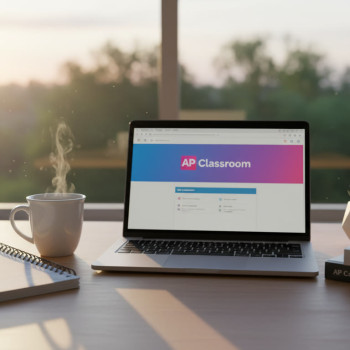Why 15 Minutes Can Change Your AP Game
You’re juggling classes, extracurriculars, maybe a part-time job, and a life that somehow still expects you to sleep. The idea of long, concentrated study sessions for AP Language and Composition or AP Literature can feel impossible. That’s where a 15-minute language workout becomes a game-changer. Short, focused bursts of practice—done consistently—build fluency, sharpen analysis, and train your brain to perform under time pressure.

The science behind short, frequent practice
Research in cognitive science and learning shows that distributed practice (spreading study across shorter sessions over time) beats one-off marathon cram sessions. Fifteen-minute sessions exploit two advantages:
- Attention economy: You can maintain high focus for 15 minutes; fewer distractions and better quality of study.
- Spacing and retrieval: Regular short sessions help space out exposure to content and give repeated retrieval opportunities—both critical for long-term memory.
For AP language exams, those advantages translate into clearer argumentation, quicker rhetorical analysis, and faster, more accurate reading. The 15-minute workout is not about grinding volume; it’s about precision practice.
How to Use This 15-Minute Workout: The Daily Routine
Below is a repeatable, high-impact routine you can do in the morning, between classes, or before bed. It’s divided into focused blocks so every minute counts.
0:00–1:00 — Setup and intention
Start your timer. Spend the first minute setting a specific, measurable intention: “Find three strategies the author uses to build ethos” or “Reduce passive voice in this paragraph by two changes.” Goals that are specific keep the session aggressive but achievable.
1:00–6:00 — Focused reading or prompt scan (5 minutes)
Choose a short passage or an exam-style prompt. For AP Language, this could be a 200–350 word rhetorical passage. For AP Literature, pick a short poem or a dense paragraph from a novel. Read actively. Mark one or two rhetorical moves or literary devices you’ll analyze.
- Quick tip: Use a two-line pointer (your finger or a slip of paper) to pace your eyes while reading; it improves comprehension speed.
6:00–11:00 — Targeted analysis or practice (5 minutes)
Now do something specific with the passage: annotate for evidence, write three crisp thesis lines, or paraphrase a paragraph in one sentence. If practicing multiple-choice, answer the question and write one sentence explaining why you rejected the best distractor.
11:00–14:00 — Quick synthesis (3 minutes)
Summarize what you found: a one-paragraph micro-response, a two-sentence rhetorical analysis, or a cleaned-up thesis. This is your rehearsal for exam-style writing—practice making argument and evidence align quickly.
14:00–15:00 — Reflection and micro-improvement (1 minute)
End by noting one thing you did well and one specific improvement for next time. Tracking these tiny gains compounds into big improvements over weeks.
Three Sample 15-Minute Workouts (Swap These Into Your Week)
Rotate these workouts across the week so your practice is varied and balanced between reading, analysis, and composition.
Workout A: Rhetorical Sprint (AP Language focus)
- Passage: 250–300 words (editorial, speech excerpt, or persuasive essay)
- Goal: Identify three rhetorical devices and write a concise claim about the author’s strategy.
- Outcome: Better speed at spotting logos/ethos/pathos and linking evidence to claims.
Workout B: Tight Thesis and Evidence
- Prompt: One AP-style prompt or a micro-essay question
- Goal: Draft a strong thesis and cite two concrete pieces of evidence in sentence form.
- Outcome: Practice building argument scaffolding quickly—useful in multiple-choice and free-response sections.
Workout C: Grammar and Clarity Drill (Editing)
- Text: A single paragraph (student essay or sample AP response)
- Goal: Find and correct three stylistic or grammatical errors—focus on concision, active voice, and transitions.
- Outcome: Cleaner writing under time limits, easier grading interpretation, higher rhetorical maturity.
One Table to Help You Track Progress
| Week | Workout A (Rhetoric) | Workout B (Thesis) | Workout C (Editing) | Notes / Focus |
|---|---|---|---|---|
| 1 | 5 sessions | 3 sessions | 2 sessions | Establish baseline speed |
| 2 | 4 sessions | 4 sessions | 3 sessions | Work on thesis clarity |
| 3 | 3 sessions | 5 sessions | 4 sessions | Push for concision |
| 4 | 2 sessions | 6 sessions | 5 sessions | Simulate timed free-response |
How to Make the Minutes Count: Tactical Advice
Fifteen minutes doesn’t leave room for fluff. Here are concrete tactics to squeeze value from each session.
1. Use a visible timer
Setting a visible countdown (phone or kitchen timer) cultivates urgency without panic. Seeing time tick down keeps you honest about pacing.
2. Keep a “micro-notebook”
Carry a tiny notebook or a single document with short entries—date, workout type, one success, one fix. After two weeks you’ll have a powerful record of progress that’s motivating and revealing.
3. Always end with one improvement task
The one-minute reflection solidifies learning. Even if you can’t act on it immediately, the next session will start with a ready micro-goal.
Examples: What a Real 15-Minute Session Looks Like
Concrete examples make routines feel achievable. Below are two real-session transcripts you can model.
Example 1 — Rhetorical Sprint
0:00–1:00: Intent — “Identify three rhetorical strategies and explain how they support the claim.”
1:00–6:00: Read a short editorial. Marked uses of anecdote, parallelism, and an embedded statistic.
6:00–11:00: Wrote claim: “The author blends anecdote and statistics to move readers from empathy to urgency, using parallel structure to emphasize the stakes.” Added two quotes.
11:00–14:00: Summarized in two sentences how each device functions and linked to evidence.
14:00–15:00: Reflection — “Stronger at spotting devices. Next time: spend less time underlining, more on linking device to author purpose.”
Example 2 — Editing Drill
0:00–1:00: Intent — “Cut passive voice and tighten transitions.”
1:00–6:00: Read paragraph and circled passive constructions and wordy phrases.
6:00–11:00: Revised sentences to active voice and shorter phrases; replaced vague transition with a stronger word.
11:00–14:00: Re-read and timed out loud to check flow; eliminated one redundant clause.
14:00–15:00: Reflection — “Saved 6 words and clarified subject. Next: apply same edits to my last practice essay.”
Where Personalized Tutoring Fits In
Short, structured workouts work best when they’re part of a bigger plan. That’s where 1-on-1 tutoring can accelerate gains. Personalized tutors, like those at Sparkl, can diagnose your unique weaknesses (e.g., recurring evidence problems, pacing on long passages, or thesis construction) and turn the 15-minute session into a precision instrument rather than a solo experiment.
Benefits of blending the workout with personalized support:
- Tailored study plans that slot these 15-minute workouts into your weekly routine.
- Expert tutors who give micro-feedback—short corrections that fit the 15-minute model.
- AI-driven insights to pinpoint patterns in your responses so each workout targets the highest leverage skill.
Scaling the Workout Toward the Exam
As your exam date approaches, you’ll want to expand one or two of your weekly sessions into longer practice. Use the 15-minute sessions to keep sharp daily, then once a week add a 45–90 minute simulation. The small daily improvements compound and make those longer runs feel less intimidating.
Six-week ramp plan
- Weeks 1–2: Daily 15-minute workouts to build habits (mix of A/B/C).
- Weeks 3–4: Continue daily 15s; add one 45-minute mock every 7–10 days focusing on timing and structure.
- Weeks 5–6: Daily 15-minute maintenance workouts; two full-feel practice tests spaced with review days.
Common Mistakes and How to Avoid Them
Short workouts can backfire if done poorly. Avoid these pitfalls:
- Sloppy repetition: Doing the same exact drill without increasing challenge prevents growth. Add complexity: longer passages, trickier prompts, or timed synthesis.
- Passive review: Simply reading notes isn’t practice. Always include an active production task—writing, selecting, or editing.
- No feedback loop: If you never check correctness (self or tutor), mistakes fossilize. Use the micro-notebook and occasional tutor check-ins to correct course.
Motivation and Mindset: The Quiet Engine
Sometimes the hardest part is starting. Keep these mindset tools in your kit:
- Identity framing: Call yourself a “daily practitioner” rather than “a student cramming for a test.” Small identity shifts change habits.
- Progress visibility: Track streaks—consecutive days of 15-minute practice. Don’t break the chain.
- Reward micro-goals: Celebrate a week of daily practice with a small treat: a favorite snack, a walk, or an extra hour of downtime.
Putting It All Together: A Sample Week
Below is an example week that balances skills, builds endurance, and adds feedback.
- Monday: Workout A — Rhetorical Sprint (15 minutes)
- Tuesday: Workout C — Editing Drill (15 minutes) + 10-minute review of corrections
- Wednesday: Workout B — Thesis and Evidence (15 minutes)
- Thursday: Mixed 15 — 2 exercises back to back (30 minutes total) focusing on weak spots
- Friday: 15-minute creative synthesis (turn an annotation into an outline)
- Saturday: 45-minute practice (extend one of the week’s workouts into a timed free-response simulation)
- Sunday: Reflection and planning for the week (15 minutes—micro-notebook review)
Final Words: Small Time, Big Returns
Your AP preparation doesn’t have to be a battleground of all-or-nothing study marathons. Fifteen minutes a day—if organized, intentional, and slightly uncomfortable—will sharpen the skills that matter most on test day: rapid comprehension, crisp argumentation, and clear, edited writing. Pair those micro-sessions with periodic, focused feedback—whether from a trusted teacher, a mentor, or a personalized tutoring program like Sparkl—and the gains compound faster than you’d expect.
Start tomorrow. Set your timer. Write your one-minute intention. Fifteen minutes is all you need to begin—and weeks from now you’ll be glad you did.

Quick Checklist to Begin Your 15-Minute Language Workout
- Pick a time each day when you can reliably focus for 15 minutes.
- Choose a workout type (A, B, or C) and set a clear intention.
- Use a visible timer and a micro-notebook for reflections.
- Schedule one weekly extended practice and one tutor or feedback session every 1–2 weeks.
- Track progress and adjust: more thesis practice if arguments feel weak; more editing if essays read clumsy.
Good luck—your exam-day self will thank you for every focused minute you invest now.




















No Comments
Leave a comment Cancel